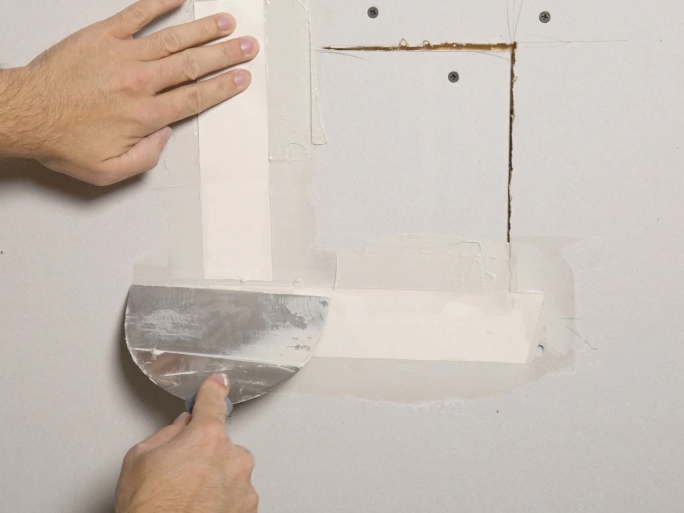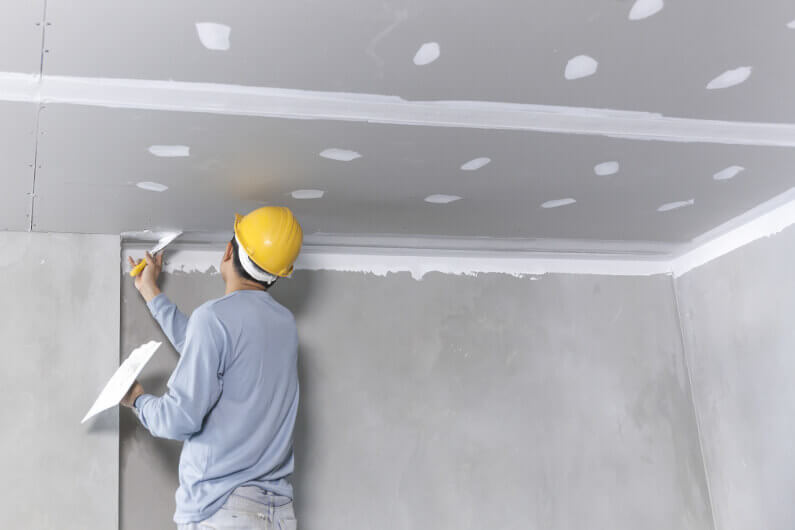Comprehensive Drywall Contractor Support for New Builds
Comprehensive Drywall Contractor Support for New Builds
Blog Article
Drywall Installment Made Easy: Tips for Perfect Results
Drywall installment is frequently perceived as a daunting task, yet with the right approach and expertise, it can become a manageable venture. Grasping strategies for reducing, hanging, and ending up drywall can considerably influence the result.
Selecting the Right Products
Picking the ideal products for drywall setup is essential to attaining a resilient and cosmetically pleasing finish. drywall installation. The key element, drywall sheets, typically been available in numerous densities, with 1/2-inch sheets being conventional for indoor wall surfaces. For areas calling for additional wetness resistance, such as kitchens or shower rooms, think about making use of green board or cement board, which are specifically made to withstand humidity

In addition, selecting the appropriate bolts-- either nails or screws-- is essential for safeguarding the drywall to the framing. Drywall screws are typically favored for their holding power and decreased risk of popping. Lastly, take into consideration the finishing touches such as primer and paint, which not only enhance the look yet additionally secure the drywall from wetness and wear.
Preparing the Installment Location
Before beginning the drywall setup process, it is important to prepare the installation location extensively. This prep work includes several essential actions to guarantee a effective and smooth job. First, clear the area of any kind of furniture, devices, or blockages that could prevent gain access to. A clean office reduces the threat of damage to existing things and enables efficient motion during installment.
Following, inspect the walls and ceiling for any kind of imperfections, such as splits, openings, or mold. Address these concerns beforehand; patch any kind of damages and enable adequate time for repairs to dry. In addition, ensure that electric outlets, buttons, and pipes are correctly placed and made up, as this will impact drywall positioning.
Think about the environmental conditions as well. A steady temperature level and moisture degree are crucial for ideal attachment and efficiency of the drywall products. If essential, make use of a dehumidifier or heating system to develop ideal problems.
Cutting and Hanging Drywall
The key to efficient drywall installation exists in the precise cutting and dangling of the panels. Begin by gauging the area precisely, taking into consideration any obstructions such as electric outlets or windows. Utilize a straight side and an utility blade to score the drywall along your dimensions, after that snap it along the scored line for a clean break. For even more complex cuts, such as around outlets, a drywall saw can be utilized for accuracy.

Always function from the top down and left to right, making certain that you maintain a staggered pattern to boost stability. Properly hanging the drywall establishes the foundation for a smooth surface, inevitably resulting in premium results in your drywall job.
Insulation and Mudding Techniques
While proper cutting and hanging of drywall establishes the phase, the next vital action involves grasping taping and use this link mudding strategies to guarantee a smooth finish. Taping is necessary for enhancing joints and avoiding fractures; it entails installing tape into the used joint substance (mud) Start with a high quality fiberglass or paper tape, applying the tape over the joint and pushing it right into the damp mud making use of a taping knife, guaranteeing no air bubbles continue to be.
Once the tape is in location, apply a slim layer of joint compound over the tape, feathering the edges to create a smooth transition to the drywall surface area. Allow this layer to dry completely before sanding it lightly to eliminate flaws. Repeat this process, applying extra layers of mud as necessary-- commonly a couple of layers-- while progressively widening the application location with each layer to attain a smooth appearance.
After the last coat dries, sand the surface with a fine-grit sandpaper till smooth. drywall repair. Keep in mind to use a mask throughout sanding to avoid inhaling dust fragments. Understanding these taping and mudding methods is important for attaining a professional-quality surface in your drywall setup
Completing Touches for Perfection
Attaining a remarkable drywall installment exceeds taping and mudding; it culminates in the ending up touches that raise the general look. These last actions are critical in guaranteeing a professional-grade coating that boosts the aesthetic appeals of your space.
Begin by sanding the dried joint substance to develop a smooth surface. Use a fine-grit sandpaper and a sanding block or pole sander for optimum control. Pay specific interest more tips here to edges and edges, as these areas have a tendency to require more precise job. After sanding, wipe down the walls with a wet fabric to remove any dust fragments, guaranteeing a clean surface area for paint.
Next, apply a guide particularly made for drywall. This step is essential, as it helps seal the joint compound and gives a consistent base for the topcoat. As soon as the primer dries out, check for any type of flaws, and retouch as needed.
Conclusion
Finally, successful drywall installment pivots on the cautious option of materials, complete prep work of the setup area, and specific execution of reducing and hanging methods. Mastery of taping and mudding processes is essential for accomplishing a smooth coating. In addition, focus to ending up touches, including priming and touch-ups, makes certain a professional-grade result. By adhering to these standards, the high quality of craftsmanship can be dramatically enhanced, adding to the general visual and performance of the space.
Drywall installation is typically viewed as a daunting job, yet with the ideal strategy and expertise, it can become a manageable endeavor.Selecting the suitable materials for drywall setup is crucial to accomplishing a resilient and cosmetically pleasing coating.Before beginning the drywall installment process, it is important to prepare the setup area extensively. Understanding these taping and mudding methods is essential for accomplishing a professional-quality surface in your drywall installation.
In verdict, successful drywall installment hinges on the mindful selection of materials, thorough preparation of the installment area, and accurate implementation of reducing and hanging methods.
Report this page